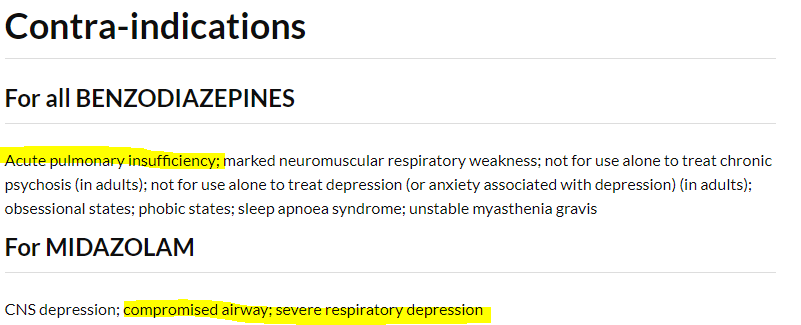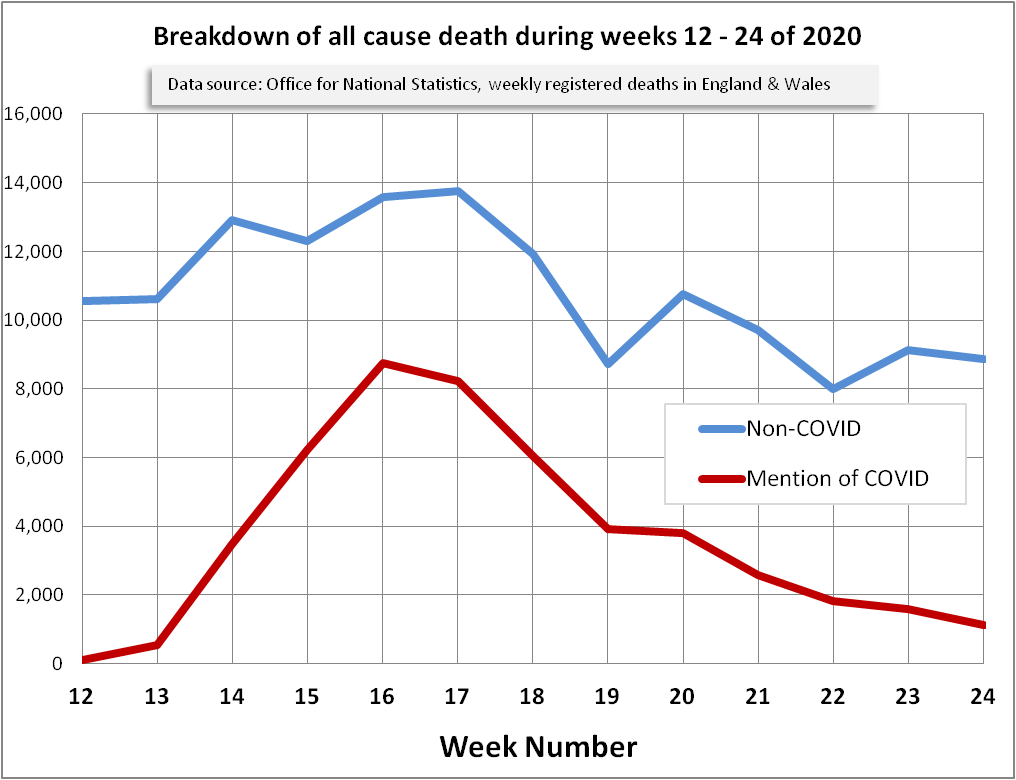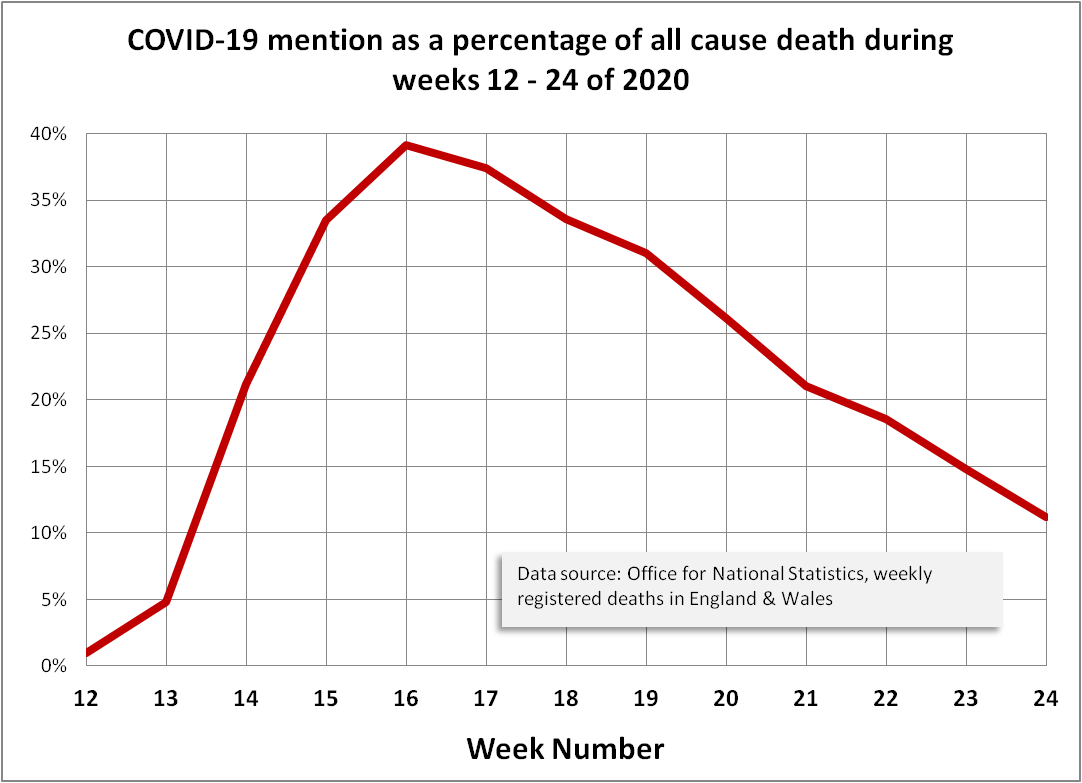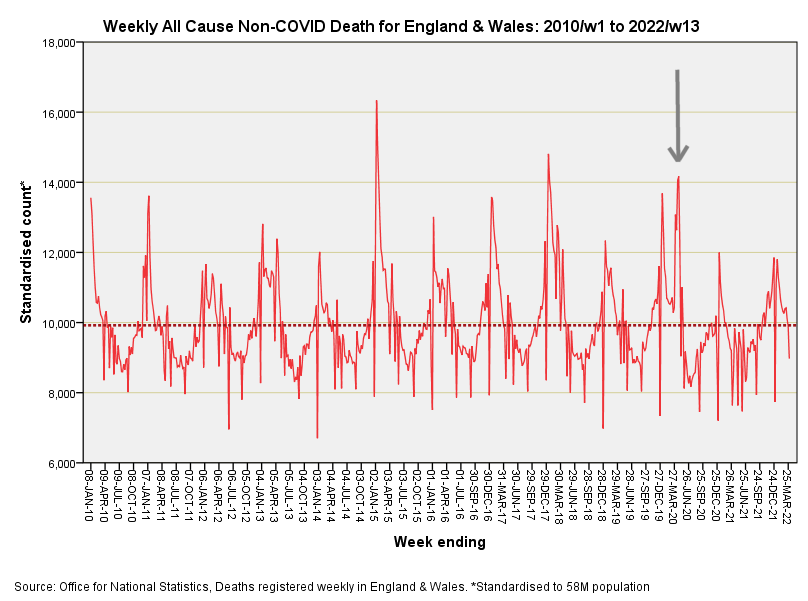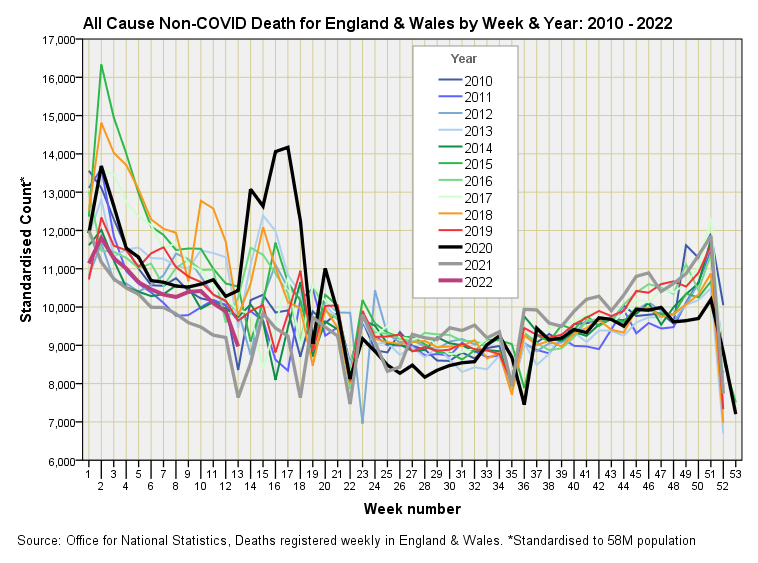Weekly Deaths Update (part 3)
Registered weekly deaths in England & Wales 2010 - 2022
Yesterday we came to the realisation that the pandemic was singularly defined by a dirty great spike in deaths during weeks 14 to 21 of 2020, this being a period during which old and frail folk were evacuated from hospital beds into nursing and care homes and put on end of life care pathways. Cause of death during this upheaval in care thus becomes somewhat complicated since we cannot sensibly pin everything on the virus and only the virus even if people were testing positive: starvation can kill a positive-testing patient, as can dehydration, withdrawal of their usual medication and judicious use of drugs like Midazolam. Talk to a social worker and they’ll add loneliness as a killer.
For those not familiar with Midazolam (a benzodiazepine) here’s a little of what the British National Formulary tells us…
…yes, you read that right Midazolam can induce respiratory depression and should not be used in cases of acute pulmonary insufficiency, severe respiratory depression and compromised airway. In other sections on BNF we learn that Midazolam and cardiac disease don’t mix and shouldn’t be given to patients prone to falls. Vomiting is a common side-effect (hence nil by mouth notices). Sounds like an ideal drug to pump into the elderly by the gallon doesn’t it? Matt Hancock, the UK health secretary that was, sure thought so.
But I digress. Getting to the bottom of that big spike during spring 2020 will require a public enquiry for all we have to go on are counts of deaths where COVID-19 is mentioned somewhere on the death certificate. Even if these can be reasonably assumed to be genuinely causal (recorded under section 1 of the death certificate by a competent physician) we are going to be stymied by incidences of multicausal death. Thus, mention of COVID on the death certificate does not necessarily mean COVID and COVID alone; please bear this in mind when eyeballing the following slides. Ideally we’d be able to break the COVID tally down into COVID as sole cause of death, COVID as a contributory cause of death (co-causal) and COVID as a non-contributory cause (co-morbid) but the authorities will get uppity if we ask for this sort of information. With the usual caveats in place here’s how that monster spike of 2020 breaks down:
And here’s how it looks in terms of a percentage profile:
It sure looks to me like that monster spike of spring 2020 cannot be pinned on COVID alone, and especially so when we consider what mention of COVID actually means. With my suspicion aroused, and at the risk of offering up an oxymoronic title, I decided to plot out weekly all cause non-COVID death for the period 2020/w1 – 2022/w13 to see what we can see. There’s that there spring spike for 2020, sticking out above the dashed series mean of 9,922 deaths per week like a sore thumb, and this despite us sweeping COVID cases out of the way:
Finicky folk (and that includes me) will argue that there are lots of spikes and mumble something about not being sure if that there spring spike of 2020 means anything given the substantial week on week variation. This calls for those crayons again! Cop this...
Voilà! There’s a big black fly buzzing in the ointment if ever I saw one. The spring lockdowns and NHS bed shunting games of 2020 were supposed to save lives but here is stark evidence of an increase in non-COVID all cause death during this period. Somebody needs some serious explaining to do given we were all safely tucked away in our homes learning a musical instrument instead of doing dangerous things like driving. Evidence suggesting a quieter and safer life can be observed during weeks 24 to 30 of 2020 and again during weeks 48 to 51. The year 2020 started out pretty normal, so what non-COVID thing happened during weeks 14 to 18 to generate the worst spring death rate I can muster? My money is on the devastating NHS shake-up leading to dangerous discharge and end of life care pathways for those whose life was not necessarily ending. Throw in closure of diagnostic and elective services, together with the end of General Practice as we know it and there you have it. The phrase we use in the business is iatrogenic death.



